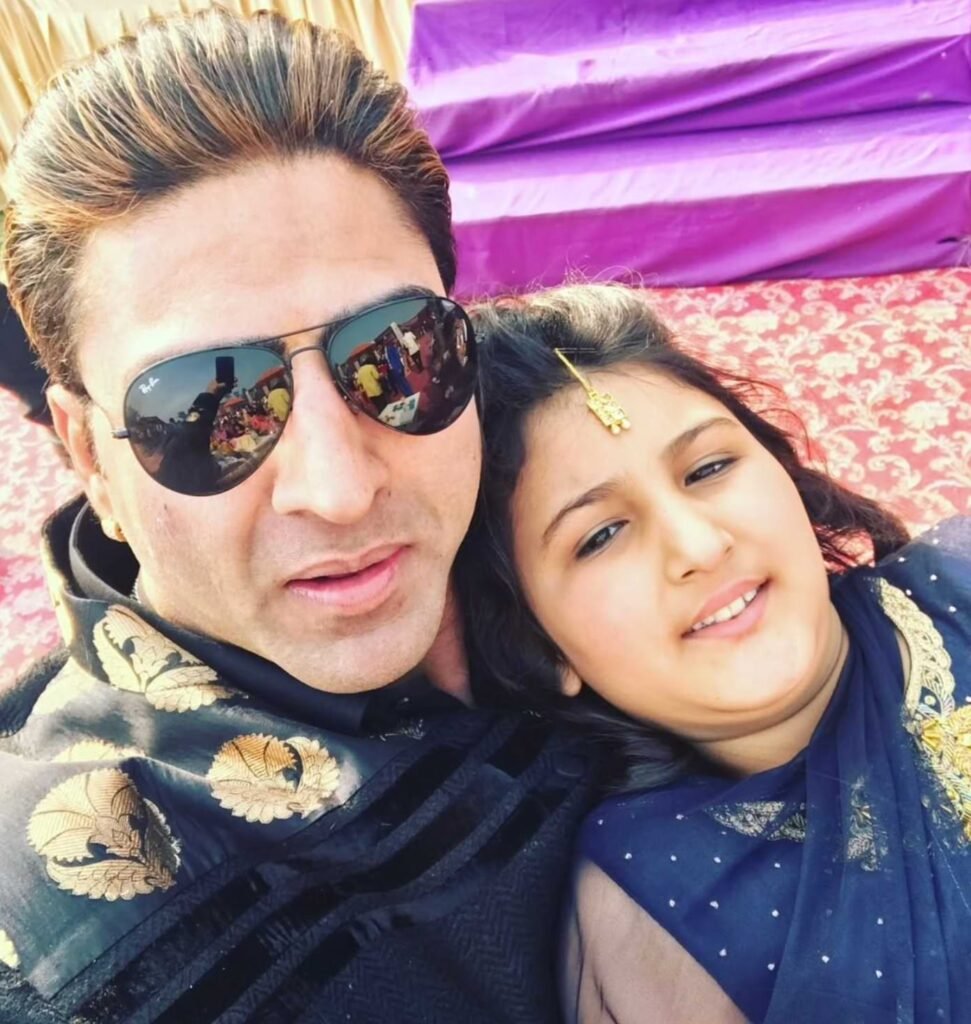Basic Information
| Name | Varinder Singh Ghuman |
| Nickname / Title | He-Man of India |
| Professions | Actor, Professional Bodybuilder, Dairy Entrepreneur |
| Known For | First Vegetarian Bodybuilder, Mr. India 2009 Winner |
| Date of Birth | 28 December 1982 |
| Place of Birth | Talwandi, Gurdaspur, Punjab |
| Date of Death | 9 October 2025 |
| Place of Death | Amritsar, Punjab |
| Cause of Death | Cardiac Arrest |
| Age at Death | 42 Years |
| Height | 6’3″ (190 cm) |
| Weight | 140 kg (308 lbs) |
| Body Measurements | Chest: 53″ • Waist: 35″ • Biceps: 23″ |
| Marital Status | Married |
| Children | Sons: Gurtejvir (b. 2009), Bhagwant (b. 2020) • Daughters: Gavy, Ekamjot |
Biography & Career Highlights
Varinder Singh Ghuman (1982–2025), fondly known as the He-Man of India, was an Indian actor, professional bodybuilder, and dairy entrepreneur. He gained worldwide fame as the first true vegetarian bodybuilder — a man who proved that extraordinary strength could come from a purely plant-based diet.
On 9 October 2025, the fitness and film world mourned a tragic loss as Varinder Singh Ghuman passed away at the age of 42 due to a cardiac arrest. The incident reportedly occurred in Amritsar, Punjab, and sent shockwaves across the Punjabi and Bollywood film industries. Tributes poured in from celebrities like Mankirt Aulakh and Nirmal Rishi, and from fitness icons who remembered him as a humble, disciplined, and inspiring personality.
Early Life & Education
Born on December 28, 1982, in Talwandi, Gurdaspur, Punjab, Varinder grew up in a family with a strong sports background — his father, Bhupinder Singh, was a kabaddi player, while his grandfather played hockey. He completed an M.A. in English from Lyallpur Khalsa College, Jalandhar, and later went to Mumbai for training in acting and dance.
Bodybuilding Career
His bodybuilding journey began in Jalandhar, where he trained intensely for years before winning Mr. Jalandhar and Mr. Punjab titles. His dedication bore fruit when he was crowned Mr. India in 2009. That same year he placed second in Mr. Asia. Later he won the Australian Grand Prix (2011) and earned the IFBB Pro Card. He also made history as the first Indian and Asian finalist at the Arnold Classic Europe Championship.
Vegetarian Philosophy & Business
What distinguished Varinder was his strict vegetarian lifestyle in a field often dominated by meat-based diets. His meals included dairy, paneer, lentils, nuts, and pulses — demonstrating that muscle and strength could thrive without meat. He also ran a dairy business, focusing on high-quality milk production that aligned with his beliefs in purity and health.
Acting Career

Varinder made his acting debut in Punjabi cinema with Kabaddi Once Again (2012) as Shingara Singh. His towering frame soon brought him roles in Bollywood films such as:
Roar: Tigers of the Sundarbans (2014) opposite Nora Fatehi
Marjaavaan (2019)
Tiger 3 (2023) alongside Salman Khan
He also appeared in music videos and theatre performances, often portraying mythological heroes like Hanuman and Bheem.
Personal Life
Varinder was married and is survived by his wife and four children:
Sons: Gurtejvir (born 12 December 2009), Bhagwant (born 22 October 2020)
Daughters: Gavy, Ekamjot

He was known for sharing his family moments on social media, revealing a gentle and caring side behind his massive physique.
Lifestyle, Gym & Business
Varinder founded Ghuman’s Den Fitness Gym in Jalandhar, which became a well-known training center. He also managed a dairy farm business, reinforcing his commitment to a vegetarian ethos. His vehicle collection included luxury cars like Range Rover, Fortuner, Verna, Cruze, and he rode a Harley Davidson.
Achievements
Mr. India 2009 – Winner
Mr. Asia 2009 – 2nd Position
Winner – Australian Grand Prix 2011
First Vegetarian IFBB Pro Bodybuilder
Arnold Classic Europe Finalist
Brand Ambassador for Arnold Schwarzenegger’s health products
Arnold Schwarzenegger personally praised Varinder’s physique during a competition in Spain and later shared his admiration publicly.
Fitness & Discipline
Varinder’s daily routine emphasized early workouts, meditation, and disciplined nutrition rooted in his Sikh beliefs. He also trained prominent Bollywood stars like Salman Khan, Ranveer Singh, and Saif Ali Khan.
Death & Tributes
On 9 October 2025, Varinder Singh Ghuman passed away from a sudden cardiac arrest in Amritsar. The news came just a day after the death of Rajvir Jawanda, making for a deeply sorrowful period for the Punjabi industry. Tributes poured in from artists, fans, and personalities remembering Varinder’s strength, humility, and vegetarian message.
Legacy
Varinder Singh Ghuman’s life embodied strength, spirituality, and conviction. From a small Punjabi town to international bodybuilding stages and Bollywood sets, his journey inspired many. Even in death, his name continues to stand for compassionate strength, Indian pride, and undying determination.
FAQs
Q1. How tall is Varinder Singh Ghuman?
Varinder Singh Ghuman stood at an impressive 6 feet 3 inches (190 cm) tall. His towering physique and muscular frame made him one of India’s most recognizable bodybuilders and a standout presence in both fitness events and films.
Q2. Is Varinder Singh Ghuman vegetarian?
Yes. Varinder Singh Ghuman was a strict vegetarian and proudly promoted plant-based fitness throughout his career. He earned the title of the world’s first vegetarian professional bodybuilder, proving that strength and endurance can be achieved without consuming meat.
Q3. Are the Ghumans Jat Sikhs?
Yes. Varinder Singh Ghuman belonged to a Jat Sikh family from Talwandi village in Gurdaspur, Punjab. His roots in Punjab’s farming and sports traditions shaped his discipline, work ethic, and strong connection to Sikh values of purity and humility.
Q4. What movies did Varinder Singh Ghuman act in?
Varinder Singh Ghuman appeared in both Punjabi and Bollywood films. His notable movies include:
- Kabaddi Once Again (2012) – Punjabi
- Roar: Tigers of the Sundarbans (2014)
- Marjaavaan (2019)
- Tiger 3 (2023) alongside Salman Khan
Q5. Did Varinder Singh Ghuman own a gym?
Yes. Varinder founded Ghuman’s Den Fitness Gym in Jalandhar, Punjab, which became a popular training center for aspiring bodybuilders and fitness enthusiasts. He also trained Bollywood celebrities like Salman Khan, Ranveer Singh, and Saif Ali Khan at his gym.

